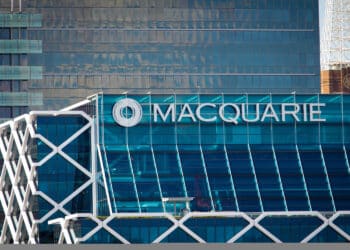Global share markets might not be out of the woods just yet as a number of key considerations continue to loom in the near-term, according to AMP’s chief economist, Shane Oliver.
In a market note, he said the last two weeks have served as an indicator of “how sensitive investors are to weaker economic data”.
The period from 2 to 9 August saw a turbulent ride for markets, starting with US recession concerns that were intensified by investors “rushing to unwind risky positions”, including yen carry trades.
However, Oliver noted, assurances from the Bank of Japan that it will not raise rates in “unstable” markets, coupled with better-than-expected US economic data, helped share markets veer back to the path of recovery.
Eurozone shares closed the week up 0.6 per cent and US shares were relatively flat, while Chinese and Japanese shares were down 1.6 per cent and 2.5 per cent, respectively.
The ASX, which plummeted 3.7 per cent on 5 August as the panic set in, managed to show some recovery but ended the week down some 2.1 per cent with losses led by resources, IT property, and financial shares.
The loss is even more pronounced (-6 per cent) when considering the start of the month when Australian shares posted a record high, surpassing 8,100 points.
Looking ahead, Oliver is confident shares hold the potential to “bounce a bit further” but remain vulnerable to declines over the next few months.
He told InvestorDaily that the ASX might have already peaked for this calendar year.
“I didn’t expect we would get to 8,100 as quickly as we did. My base case is, we go higher on a 12-month basis, but I’m unsure whether we end up closing at 8,100 this year, we might get there and that’s it,” Oliver said.
“I suspect it could be the high for a while.”
Meanwhile, Oliver said recession risk also remains high in both the US and Australia, with forward looking jobs indicators pointing to further lifts in unemployment ahead.
While his base case remains that Australia will “scrape through” and avoid a recession, the economist estimates the risk of recession at 50 per cent.
Other risks to share markets, he said, include geopolitics simmering around the US election and tensions in the Middle East; stretched valuations; and investment sentiment that is “not yet at levels that signal major market bottoms”.
“When sentiment is very optimistic, that is bad news for the market, because if you get any disappointment, in relation to profits or interest rates, then share markets can fall,” Oliver said.
“By contrast, when sentiment has fallen to bear market extremes, if you get some bad news, it doesn’t cause extra selling necessarily, but if you get good news, then it doesn’t take much to tip the market higher again.”
With this outlook, there is room for investors to “become a bit more bearish”, he said, “which could lead to more selling ahead”.
“Evidence of that has been quite a lot of dip-buying [in the last week], that investors are buying the dip – it’s telling us they’re more optimistic than pessimistic,” he said.
Oliver explained that markets have just entered the seasonally weak period of August and September, which can extend into October and November during US election years, and with the corporate reporting season contributing to this weakness, there will be significant focus on optimism and company results.
Presently, profits are expected to rise around 13 per cent over the next 12 months in the US and in global markets. In Australia, this figure stands at a more modest 5 per cent, Oliver said.
“If we get a situation where profit numbers are bleak, then the profits get revised down, and that can be a bad outcome for the share market,” he said.
“That’s why this profit reporting season, some would say, is make or break, because you’ve had two years of falls and markets hung in there […] so you really do need to get some decent profit numbers to come through, or at least the expectation that profit growth will rise.”
Oliver added: “Ideally, we need to see more companies reporting increases in dividends from a year ago as this would be a sign of corporate confidence in the sales and profit outlook.”
Looking ahead, he concluded that another turbulent period is “certainly a possibility”.
“Here’s the funny thing with share markets – you go through lengthy periods when it looks like smooth sailing – there are moves of 0.2, 0.3, 1 per cent at most – and then every so often, you get these bouts of volatility. Given there are risks around at present, like geopolitics, recession, the risk of another turbulent week is quite high,” Oliver told InvestorDaily.
“We’ve been in a cyclical bull market for a while now, and optimally, in such a market, investors develop long positions. When they get bad news, they suddenly cut them, and that gives you these gradual moves up and occasional sharp falls down.
“So we can certainly have some volatile days ahead.”







